What Is Sustainable Fashion? The Environmental Impact and Future of the Fashion Industry, Explained

When it comes to “sustainable fashion,” there are many definitions, each looking at the environmental impact of the fashion industry from a different perspective. The main goal of all these approaches and different ways to measure is to reduce the impact of apparel production and waste on the environment.
What are the impacts of the fashion industry on the environment?
Water, land use, pesticides and waste — the global fashion industry touches on many aspects of the environment from the farming of raw materials, through the production phase to what happens to them when they are no longer “in fashion.”
More from WWD
TikTok Trend Underconsumption Core Ticks Consumer Concerns on Spending, Sustainability
EXCLUSIVE: Circ Launches Second Collab With Zara - and Why It Matters
Eco-Activist/Actress Alicia Silverstone and EBay Discuss Benefits of Pre-loved Re-commerce
In data revealed by fashion and apparel industry NGO Textile Exchange, global fiber production nearly doubled from 2000 to 2022, when it hit 116 million tons, and is on track to top 147 million tons of garments made per year in 2030. That equals up to 100 billion new garments produced globally each year.
Coupled with the doubled production volume in that time, consumers halved the time they keep their clothing items. As micro-trends move along faster than ever, tossing out last season’s shirt means that most of these clothes — about 85 percent — end up in landfill. Globally, only 1 percent of garments are recycled and turned into new clothes.
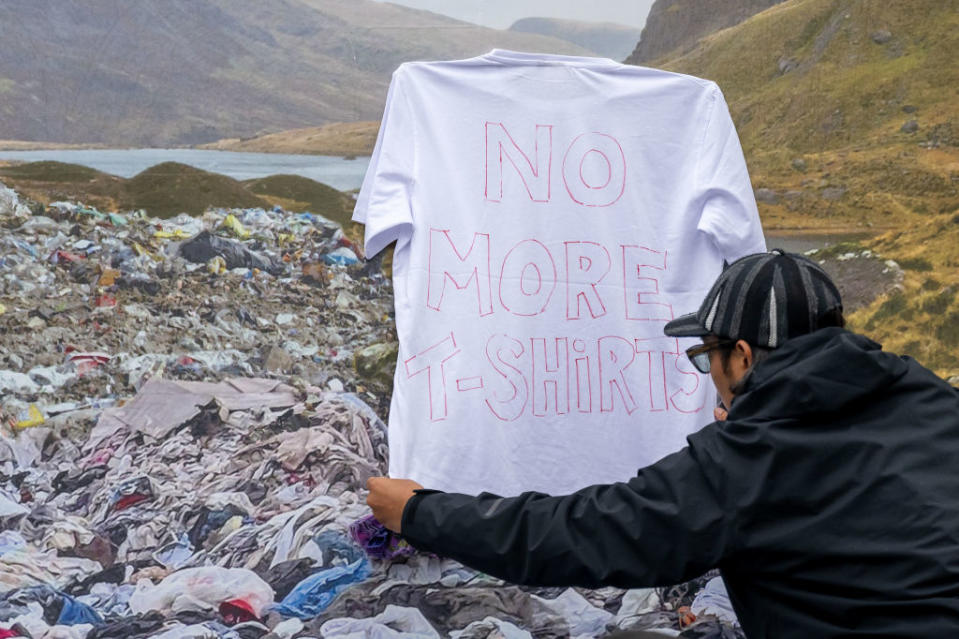
The environmental impacts of clothing start at the beginning of the production process, using about 215 trillion liters of water per year, and creating about 20 percent of the world’s industrial wastewater pollution. Much of that comes from the dyeing or finishing process, like adding decorative whiskering to jeans.
And the fashion industry is responsible for 8 to 10 percent of global carbon emissions, according to the United Nations and European Union estimates.
How can the fashion industry lessen that impact? Different materials, metrics and ways to address the apparel industry’s impact are part of the discussion.
Organic Materials
Organic clothes are produced from natural materials grown from non-GMO seeds without the use of pesticides or fertilizer. While cotton might be the most widely known and used material, bamboo, hemp, wool and linen are other fibers that can be grown organically.
Bypassing the use of chemical fertilizers and pesticides helps protect biodiversity of the soil and the surrounding insects — think bees and other pollinators — as well as avoid the runoff that pollutes nearby lakes, rivers and ultimately into the water supply.
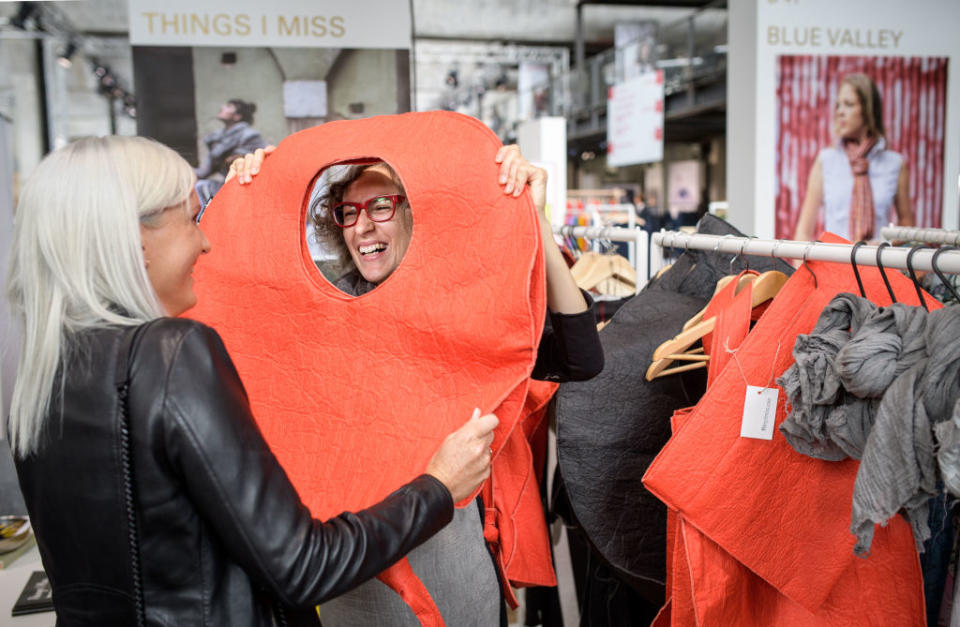
Look out for labels here — GOTS is the Global Organic Textile Standard is the most recognizable and well respected. Its two levels of labeling (“organic” and “made with organic”) require 75 and 95 percent organic fibers respectively. It also monitors wastewater treatment, chemical disposal and takes worker welfare into account.
Organic Content Standard, or OCS, looks at organic fibers in a textile throughout the entire supply chain, but has less focus on chemicals and working conditions. OEKO-TEX is the flip side, focuses on testing for harmful chemicals. Their organic certification launched last year, and has seven levels with various parameters.
Beware greenwashing here where brands use the word “green” or even colored labels to imply that a garment is made of organic materials.
Recycled Materials
While brands are installing “take-back” boxes in their stores to encourage recycling, the tech and facilities to recycle clothes are actually pretty limited. Only 12 percent of the material used for clothing ends up being recycled (and often downcycled into products like mattress filling), and recycled textiles, including cotton, made up less than 1 percent of the global market in 2022 according to Textile Exchange.
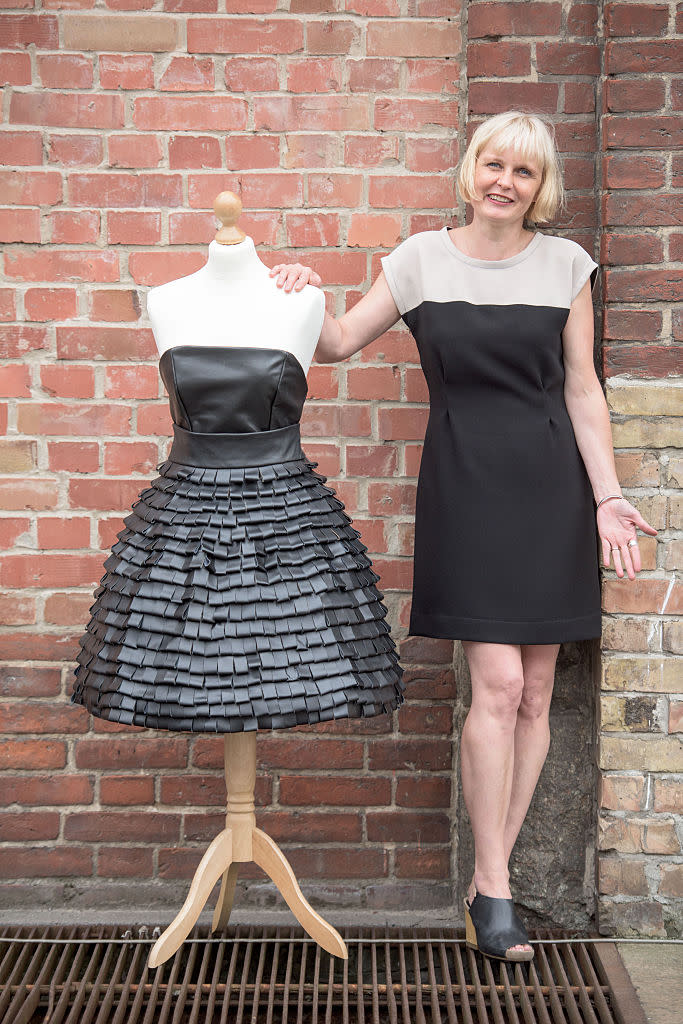
You’ll see recycled polyester on clothing labels, but 99 percent of that comes from old water bottles, not last year’s bubble hem skirt.
Since polyester is made from crude oil, new companies and brands are setting out to change that and reduce the use of virgin polyester in fashion. Los Angeles-based Ambercycle has created a recycled polyester with its Cycora material — and recently partnered with cult Scandinavian brand Ganni.
One of the biggest tech challenges is recycling blended textiles such as polyester and cotton mixes. Circ has a new method for recycling those into new fibers such as polyester or lyocell that can be mixed with virgin fibers.
There’s progress being made on recycled fabrics, but still a long way to go until they make up a large portion of fashion’s production.
Next-gen Alternative Materials
Next-gen leather alternatives are helping the fashion industry reduce the carbon emissions from the greenhouse gas and resource-intensive cattle industry. There are leathers made from grapes, cactus, mango or pineapple that can be made into garments or accessories. New companies are exploring unexpected sources every day — there’s even leather made from waste brewery grain.
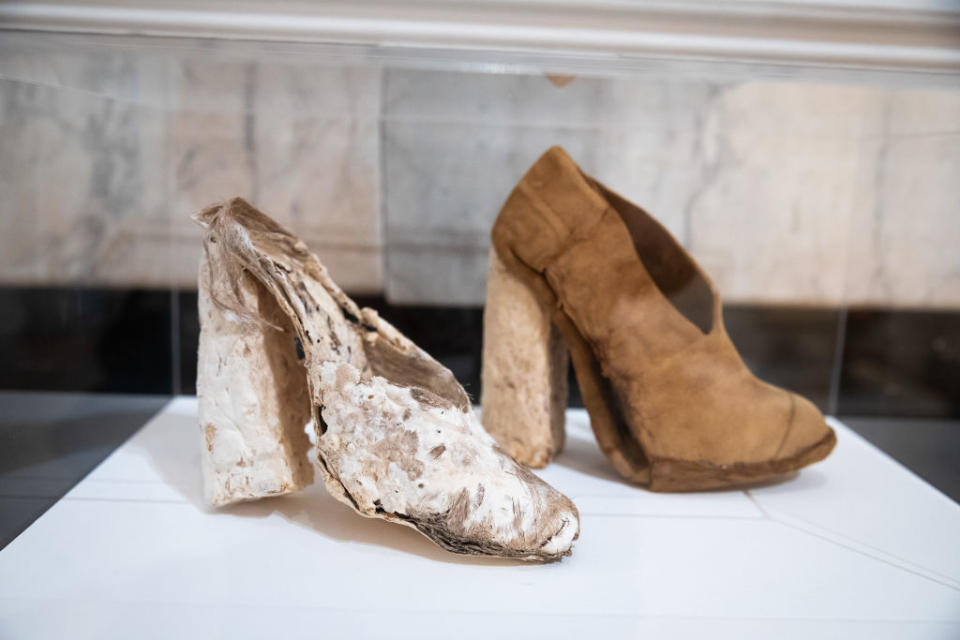
Another method is to grow new leathers, mostly from mushrooms. Called mycelium, mushroom-based textiles such as Ephea and Lunaform have been used by luxury conglomerate Kering and its brands; Hermes has designed a bag with MycoWorks’ Reishi and Bolt Threads’ Mylo stepped out with an Adidas collaboration.
Other methods upcycle mushroom and shellfish waste to create a textile. Many of these are in the research and development stage, or have produced small quantities.
Companies such as Gen Phoenix, are recycling leather scraps and turning it into new fibers that can be turned into a sustainable leather alternative. Their product has been used to make handbags. Other biotech includes using seaweed to make T-shirts like in Keel Labs Kelsun fiber, or mimicking spider silk with protein such as Spiber.
Big brands are looking for new solutions, but most of the technology is still in the research and development stage, or early-stage growth with a few hero items under their belt. Many companies are scaling up with factories and bigger production facilities on the horizon.
Circular Fashion
The word “circular” is used in two ways when it comes to fashion: “circular economy,” which encourages repurposing or reusing items such as selling a second hand or vintage item, and “circular design” encourages designers and brands to think of a garment’s life cycle and how it will be disposed of. For example, if a cotton shirt is sewn together with metallic thread or embroidery, or using embellishments such as foil prints, it can’t be mechanically recycled.
“Circular design” keeps the recycling process in mind and uses materials and finishes that can be put back into the system more easily. The idea is to intentionally design to keep materials moving in a loop as long as possible — the dream of textile-to-textile recycling.
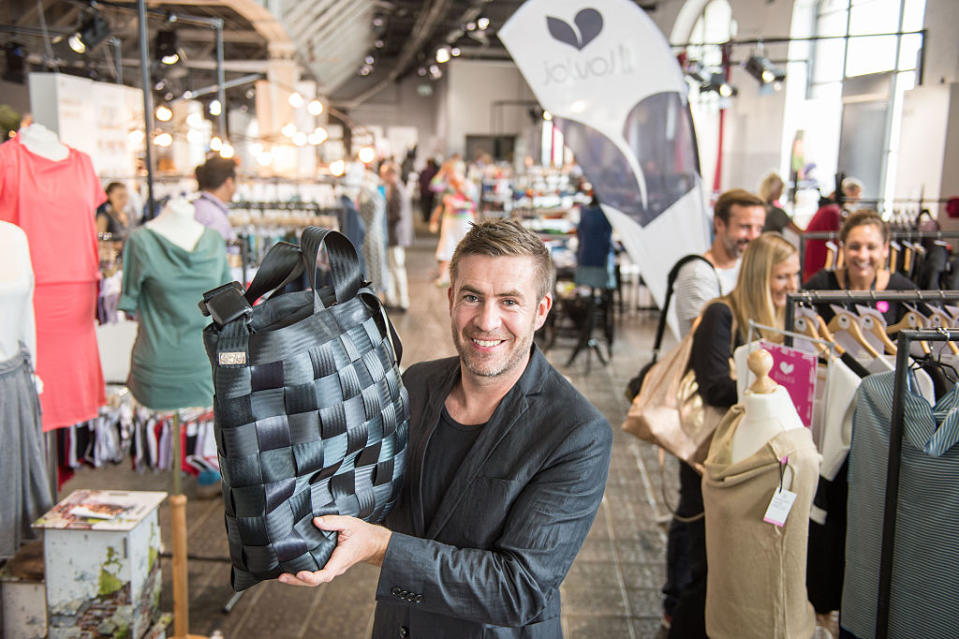
Secondhand, resale and vintage play a big part here too, keeping items in circulation for years instead of going straight to landfill.
Keeping things circular is an important key in the sustainable fashion debate. The ever-growing use of natural resources and extractive production, like using oil to make polyester or cutting down trees to make rayon/viscose, so keeping existing textiles in use as long as possible is more sustainable.
Upcycling or Using Deadstock
Upcycling is another method of keeping something in circulation by repurposing the original garment. Designers or just your average handy crafter take apart clothes and use them in creative new ways. These are often bespoke or one-of-a-kind creations, with their uniqueness adding value to the new wares.
Deadstock is the practice of using unsold or a brand’s surplus textiles and fabrics, thus diverting them from the dumpster. When companies buy too much for a season it goes unused and can sit for years. LVMH’s Nona Source is a great example — it sells on the unused rolls of fabric from its luxury houses. This can be a treasure trove for younger designers and small houses, or for one-season capsules that require smaller amounts of material to make a collection, while reducing waste.
Slow Fashion
Since fast-fashion brands tend to dominate the mall and main street, “slow fashion” brands have emerged as a direct response. These brands make high-quality, lower impact and timeless styles from lower impact materials. They’re often made-to-order or made in small quantities to avoid the overproduction-discount-dump cycle, and release only a few styles or collections a year.
Because of their small quantities, they often have great insight into their suppliers and can provide deep transparency on where and how their clothes are made so consumers are armed with information about the true impact of their purchases. One example is Swedish brand Asket, which gives an “impact receipt” with each purchase accounting for carbon emissions, water use and energy use from farm to rack for each garment purchased.
Fair and Ethical
While not “sustainable fashion” from an emissions or materials perspective, the terms fair and ethical are becoming increasingly important in the discussion. It’s another aspect to take into consideration — are brands and companies paying fair wages and protecting workers’ rights in the production process. It comes down to the idea that if workers’ were paid fair wages on a global scale, pricing would better reflect the true cost of an item and reduce consumers’ reliance on cheaper and cheaper goods.
Sustainability Scores
Sustainability scoring systems include the B-Corp. certification, which requires companies meet stringent environmental and social benchmarks, as well as provide certain commitments and promise transparency.
Most major fashion companies now publish annual impact reports where they lay out everything from their water and energy use in their own stores, look through their supply chains at factories abroad as well as the transport among other factors, to quantify the environmental impact of their goods. They lay out their goals, sometimes using murky language, or setting the timeframe far in the future.
These reports are a good place to understand a brand’s overall sustainability package, or to get a better idea of a company’s values. Sometimes a brand will produce a small “sustainable” collection that gets a lot of attention, but the rest of their clothes are made with conventional materials or at very polluting factories. Diving into their own data is a good way to keep tabs on your favorite brand.
Best of WWD
